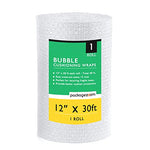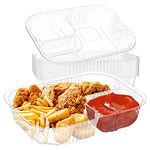You have no items in your shopping cart.
In today's fast-paced world, efficient and reliable packaging solutions are essential for businesses across various industries. One such solution that has gained immense popularity is plastic shipping bags. These versatile bags offer numerous benefits, including durability, cost-effectiveness, and customizable options. In this comprehensive guide, we will explore the world of plastic shipping bags, covering everything from their advantages and applications to frequently asked questions and best practices. So, let's dive in and discover how plastic shipping bags can revolutionize your packaging process!
Table of Contents
- What Are Plastic Shipping Bags?
- Advantages of Plastic Shipping Bags
- Applications of Plastic Shipping Bags
- Choosing the Right Plastic Shipping Bags for Your Needs
- Factors to Consider When Selecting Plastic Shipping Bags
- Best Practices for Using Plastic Shipping Bags
- How to Properly Seal Plastic Shipping Bags
- Protecting Your Shipment: Packaging Tips and Tricks
- Ensuring Security with Tamper-Evident Plastic Shipping Bags
- Sustainable Alternatives to Traditional Plastic Shipping Bags
- How to Dispose of Plastic Shipping Bags Responsibly
- Plastic Shipping Bags vs. Cardboard Boxes: Which Is Better?
- Common Mistakes to Avoid When Using Plastic Shipping Bags
- Top Plastic Shipping Bag Manufacturers
- Understanding Industry Standards and Regulations for Plastic Shipping Bags
- Plastic Shipping Bags: FAQs
- Are plastic shipping bags waterproof?
- Can plastic shipping bags be reused?
- Do plastic shipping bags come in different sizes?
- Are plastic shipping bags recyclable?
- Can I print my logo on plastic shipping bags?
- How long can plastic shipping bags last?
- The Future of Plastic Shipping Bags: Innovations and Trends
- Conclusion
1. What Are Plastic Shipping Bags?
Plastic shipping bags are lightweight and flexible packaging solutions used to transport various items securely. They are typically made from high-quality polyethylene or polypropylene materials, ensuring durability and protection during transit. These bags often feature a self-sealing adhesive strip, making them easy to open and reseal. Plastic shipping bags come in various sizes, shapes, and thicknesses, offering versatility for different packaging needs.
2. Advantages of Plastic Shipping Bags
Plastic shipping bags offer several advantages that make them a popular choice for businesses:
- Cost-effective: Plastic shipping bags are more affordable than many alternative packaging materials, such as cardboard boxes. They can help businesses save on shipping costs without compromising on quality.
- Lightweight: Plastic shipping bags are lightweight, reducing the overall weight of shipments. This feature can lead to cost savings in shipping fees and allows for easier handling.
- Durable: Plastic shipping bags are designed to withstand the rigors of transportation. They offer excellent tear resistance and protect items from moisture, dust, and other external elements.
- Customizable: Plastic shipping bags can be customized with branding, logos, and other information. This allows businesses to create a professional and cohesive brand image throughout the shipping process.
- Versatile: Plastic shipping bags can accommodate a wide range of products, from clothing and accessories to electronics and documents. Their flexibility makes them suitable for various industries.
- Transparent: Many plastic shipping bags are transparent, allowing for easy visual inspection of the contents without the need for opening or unpacking the bags.
- Tamper-evident: Some plastic shipping bags feature tamper-evident seals, providing an added layer of security and ensuring the integrity of shipments.
3. Applications of Plastic Shipping Bags
Plastic shipping bags find applications in numerous industries due to their versatility and reliability. Here are some common use cases:
- E-commerce: Plastic shipping bags are widely used in the e-commerce industry for packaging and shipping products sold online. They are ideal for clothing, accessories, small electronics, and other items.
- Retail: Retailers often utilize plastic shipping bags for transporting merchandise from distribution centers to store locations. These bags can also be used for customer purchases, ensuring the safety and protection of the products.
- Fulfillment Centers: Plastic shipping bags are commonly used in fulfillment centers to pack and ship orders efficiently. Their lightweight nature helps reduce shipping costs and enables higher volumes of shipments.
- Pharmaceuticals: Plastic shipping bags play a crucial role in the pharmaceutical industry, ensuring the safe and secure transportation of medicines, medical supplies, and healthcare products.
- Documents: Plastic shipping bags provide an excellent solution for sending important documents, such as contracts, legal papers, and confidential files. The tear-resistant properties of these bags offer added security during transit.
- Subscription Boxes: Subscription box services often rely on plastic shipping bags to deliver curated products to customers. These bags can be customized with the company's branding and offer protection for the items inside.
4. Choosing the Right Plastic Shipping Bags for Your Needs
Selecting the appropriate plastic shipping bags for your specific needs is essential to ensure optimal performance and customer satisfaction. Consider the following factors when making your decision:
- Size: Determine the size of the items you plan to ship and select plastic shipping bags that provide enough space to accommodate them comfortably. It's better to choose slightly larger bags than risking damage due to tight packing.
- Thickness: Evaluate the durability requirements for your shipments. Thicker bags offer increased resistance to tears and punctures, making them suitable for heavier or bulkier items.
- Closure Type: Plastic shipping bags come with various closure options, such as self-sealing adhesive strips or zip-lock mechanisms. Choose the closure type that best suits your packaging needs and ensures a secure seal.
- Customization: If branding and marketing are crucial for your business, opt for plastic shipping bags that allow customization with your company's logo, colors, and other branding elements.
- Tamper-Evident Features: Depending on the nature of your products and the level of security required, consider using tamper-evident plastic shipping bags. These bags offer visible signs of tampering, providing peace of mind for both you and your customers.
5. Factors to Consider When Selecting Plastic Shipping Bags
When selecting plastic shipping bags, there are several essential factors to consider. Pay attention to the following aspects:
- Material: Plastic shipping bags are commonly made from polyethylene (PE) or polypropylene (PP). Each material has its own unique properties, such as flexibility, strength, and clarity. Choose the material that best suits your specific needs.
- Environmental Impact: While plastic shipping bags offer various advantages, it is crucial to consider their environmental impact. Look for bags made from recyclable materials or explore sustainable alternatives like biodegradable or compostable options.
- Quantity: Determine the volume of shipments you typically handle to ensure you have an adequate supply of plastic shipping bags on hand. Consider ordering in bulk to save costs and avoid running out of stock during peak periods.
- Storage and Space: Plastic shipping bags are often stored in large quantities. Ensure you have sufficient storage space to accommodate your inventory comfortably and keep it organized for efficient retrieval.
6. Best Practices for Using Plastic Shipping Bags
To maximize the effectiveness of plastic shipping bags and ensure a smooth packaging process, follow these best practices:
- Inspect Bags for Defects: Before use, check each plastic shipping bag for any defects, such as tears, punctures, or faulty closures. Remove any damaged bags from the batch to maintain the integrity of your shipments.
- Properly Pack Items: Ensure items are packed securely within the bags, leaving enough space to prevent overstuffing and potential damage. Use appropriate packaging materials like bubble wrap or packing peanuts for added protection.
- Label Clearly: Clearly label each plastic shipping bag with necessary information, including the recipient's address, tracking numbers, and any handling instructions. This helps streamline the shipping process and minimizes the risk of misdelivery.
- Consider Weather Conditions: If you are shipping items to regions with extreme weather conditions, consider using plastic shipping bags with added protection against moisture or extreme temperatures. This ensures the safety of the contents during transit.
- Keep an Inventory: Maintain an inventory of your plastic shipping bags to monitor usage and plan for restocking. Regularly evaluate your needs based on shipping volume and seasonal variations.
- Train Staff: Train your staff on proper packaging procedures to ensure consistency and minimize errors. Provide guidelines on bag usage, sealing techniques, and handling instructions to maintain a high standard of quality.
- Collect Customer Feedback: Encourage customers to provide feedback on their packaging experience. This feedback can help you identify any areas for improvement and enhance customer satisfaction.
7. How to Properly Seal Plastic Shipping Bags
Properly sealing plastic shipping bags is crucial to prevent any damage or loss during transit. Follow these steps to ensure a secure seal:
- Insert Contents: Place the items to be shipped into the plastic shipping bag, making sure not to overstuff or exceed the bag's capacity. Allow for adequate space to seal the bag securely.
- Press and Seal: Press the self-sealing adhesive strip firmly against the bag's opening to create a secure bond. Ensure the adhesive is fully engaged along the entire length of the bag's opening.
- Apply Pressure: Run your hand or a flat object, such as a credit card, along the sealed edge of the bag to apply pressure and ensure a tight seal. This helps remove any air pockets and improves the bond between the adhesive surfaces.
- Check for Security: Verify that the seal is intact and shows no signs of tampering or damage. A properly sealed plastic shipping bag should remain securely closed throughout the shipping process.
- Additional Security Measures: If desired, you can further enhance the security of your shipments by using tamper-evident plastic shipping bags or adding security labels/stickers to indicate if the bag has been opened.
8. Protecting Your Shipment: Packaging Tips and Tricks
In addition to using plastic shipping bags, there are several packaging tips and tricks you can implement to provide extra protection to your shipments:
- Wrap Fragile Items: For delicate or fragile items, wrap them individually with bubble wrap or foam padding before placing them inside the plastic shipping bag. This provides an additional layer of cushioning.
- Separate Sharp Objects: If your shipment includes items with sharp edges or points, ensure they are properly wrapped or separated from other items to avoid puncturing the bag or causing damage.
- Use Fillers: Fill any empty spaces within the plastic shipping bag with fillers, such as crumpled paper or air pillows. This helps prevent items from shifting during transit and minimizes the risk of damage.
- Consider Double Bagging: For items that require extra protection, consider double bagging. Place the securely sealed plastic shipping bag into another bag for added durability and resistance to external elements.
- Label Fragile Items: Clearly label packages containing fragile items with appropriate labels or markings. This alerts handlers to exercise extra caution during the shipping and handling process.
- Include Packing Slips: Place a packing slip or invoice inside the plastic shipping bag, along with the items being shipped. This provides important information for the recipient and helps with order verification.
9. Ensuring Security with Tamper-Evident Plastic Shipping Bags
Tamper-evident plastic shipping bags offer an additional layer of security and ensure the integrity of your shipments. Here's how they work and how they can benefit your business:
- Tamper-Evident Features: Tamper-evident plastic shipping bags are designed with special features that show visible signs of tampering. This can include perforations, security seals, or unique closure mechanisms that break or show evidence of tampering if the bag has been opened.
- Increased Security: By using tamper-evident bags, you can deter unauthorized access or tampering with your shipments. These bags provide visual indicators that alert both the sender and the recipient if the bag has been compromised.
- Protecting Valuable Items: If you frequently ship high-value or sensitive items, tamper-evident bags offer an extra level of protection. They provide reassurance that the contents have not been tampered with during transit, minimizing the risk of theft or tampering.
- Building Customer Trust: Utilizing tamper-evident bags demonstrates your commitment to the security and safety of your customers' shipments. This builds trust and confidence in your business, leading to increased customer satisfaction and repeat orders.
10. Sustainable Alternatives to Traditional Plastic Shipping Bags
As environmental concerns continue to grow, businesses are seeking sustainable alternatives to traditional plastic shipping bags. Here are some eco-friendly options to consider:
- Biodegradable Plastic Bags: Biodegradable plastic shipping bags are made from materials that break down naturally over time. These bags decompose through natural processes, such as exposure to sunlight, heat, or moisture, reducing their impact on the environment.
- Compostable Bags: Compostable plastic shipping bags are designed to break down into non-toxic components that can be added to compost piles. These bags require specific composting conditions to degrade properly, such as high temperatures and microbial activity.
- Recycled Plastic Bags: Opt for plastic shipping bags made from recycled materials. These bags reduce the demand for virgin plastic and help divert waste from landfills. Look for bags made from post-consumer recycled plastic or post-industrial recycled plastic.
- Paper-based Bags: Consider using paper-based shipping bags as an alternative to plastic. Paper bags are biodegradable, recyclable, and often made from renewable resources. Look for bags made from responsibly sourced materials and choose those with minimal or no plastic coatings.
- Reusable Bags: Encourage customers to reuse plastic shipping bags by promoting their durability and versatility. Educate them on proper disposal methods and provide information on local recycling programs.
- Hybrid Options: Some manufacturers offer hybrid bags that combine plastic and other sustainable materials. These bags aim to provide the strength and durability of plastic while incorporating eco-friendly components, such as plant-based polymers or recycled materials.
11. How to Dispose of Plastic Shipping Bags Responsibly
When it comes to disposing of plastic shipping bags, it's important to follow responsible practices to minimize their impact on the environment. Here are some tips for proper disposal:
- Recycling: Check with your local recycling facilities to determine if they accept plastic shipping bags for recycling. Some recycling centers have specific guidelines or programs for recycling plastic bags. Ensure the bags are clean and free of any non-recyclable materials before placing them in recycling bins.
- Reuse: Consider reusing plastic shipping bags whenever possible. They can serve multiple purposes, such as storage or organization. Encourage customers to reuse the bags or provide information on local recycling drop-off locations.
- Alternative Recycling Programs: Some retail stores or supermarkets offer designated collection bins for plastic bags. These programs allow you to drop off used plastic shipping bags for recycling during your regular shopping trips.
- Responsible Disposal: If recycling options are not available in your area, dispose of plastic shipping bags in regular waste bins. Ensure the bags are empty and free from any non-recyclable materials. Proper disposal helps prevent litter and keeps plastic out of natural environments.
- Explore Sustainable Alternatives: Consider transitioning to sustainable alternatives, such as biodegradable or compostable bags, to reduce the environmental impact of your packaging. These options offer more eco-friendly disposal methods and help minimize plastic waste.
12. Plastic Shipping Bags vs. Cardboard Boxes: Which Is Better?
The choice between plastic shipping bags and cardboard boxes depends on several factors. Let's compare the two to help you make an informed decision:
- Weight and Size: Plastic shipping bags are generally lighter and more flexible than cardboard boxes, which can result in cost savings on shipping fees. They are also more versatile in accommodating items of various shapes and sizes.
- Protection and Durability: Cardboard boxes offer greater structural stability and protection for fragile or bulky items. They are less prone to punctures and provide a sturdier outer layer. However, plastic shipping bags can be reinforced with additional cushioning materials for added protection.
- Customization and Branding: Plastic shipping bags can be easily customized with logos, branding elements, and labels, allowing for a cohesive brand experience. Cardboard boxes offer larger surfaces for branding but may require additional printing costs or customization options.
- Storage and Disposal: Plastic shipping bags are more compact and require less storage space compared to cardboard boxes. They are also easier to dispose of, as they take up less room in waste bins and can be recycled in many areas.
- Environmental Impact: Cardboard boxes are often seen as more environmentally friendly, as they are made from a renewable resource and are widely recyclable. However, plastic shipping bags made from recycled or biodegradable materials can be more sustainable alternatives.
- Cost: Plastic shipping bags are generally more cost-effective than cardboard boxes, especially for lightweight and small items. They require less material and are easier to produce, making them a budget-friendly option for businesses.
Ultimately, the choice between plastic shipping bags and cardboard boxes depends on your specific needs, the nature of your products, and your sustainability goals. Consider the factors outlined above to determine which option best aligns with your requirements.
13. Common Mistakes to Avoid When Using Plastic Shipping Bags
To ensure a smooth and successful packaging process with plastic shipping bags, be aware of these common mistakes and take steps to avoid them:
- Insufficient Bag Size: Choosing a plastic shipping bag that is too small for your items can lead to overstuffed bags, which are more susceptible to damage. Select a bag that provides enough space to comfortably accommodate your products.
- Improper Sealing: Failing to seal the bags properly can result in open or loose seals, increasing the risk of items falling out or becoming damaged during transit. Follow the proper sealing techniques mentioned earlier in this guide.
- Ignoring Weight Limits: Every plastic shipping bag has a weight limit that it can safely accommodate. Exceeding this limit can cause the bag to tear or break, leading to potential damage or loss of the items being shipped.
- Neglecting Fragile Items: Fragile items should be properly protected within the plastic shipping bag. Failing to provide sufficient cushioning or padding can result in breakage or damage during transit.
- Inadequate Labeling: Ensure that each plastic shipping bag is clearly labeled with the necessary information, such as the recipient's address, tracking numbers, and any special handling instructions. Proper labeling helps prevent misdelivery and ensures smooth tracking.
- Skipping Quality Checks: Before using plastic shipping bags, inspect them for any defects or damage. Using bags with tears, punctures, or faulty closures compromises the safety and security of your shipments.
By avoiding these common mistakes, you can improve the reliability and efficiency of your packaging process, leading to happier customers and fewer instances of damaged goods.
14. Top Plastic Shipping Bag Manufacturers
When sourcing plastic shipping bags for your business, it's important to choose reputable manufacturers known for their quality and reliability. Here are some top manufacturers to consider:
- Uline: Uline is a renowned supplier of packaging, shipping, and industrial materials. They offer a wide range of plastic shipping bags in various sizes, styles, and materials to suit different needs.
- International Plastics: International Plastics specializes in providing custom plastic packaging solutions. They offer a diverse selection of plastic shipping bags, including custom printing options.
- PackagingSupplies.com: PackagingSupplies.com offers a comprehensive range of packaging materials, including plastic shipping bags. They provide options for both stock and custom bags to meet specific requirements.
- TricorBraun Flex: TricorBraun Flex is a leading manufacturer of flexible packaging solutions. They offer a wide array of plastic shipping bags, including custom designs and specialty features.
- The Packaging Company: The Packaging Company focuses on eco-friendly packaging solutions. They offer sustainable plastic shipping bags made from recycled materials or compostable alternatives.
- Associated Bag: Associated Bag is a trusted supplier of packaging, shipping, and workplace products. They offer a wide selection of plastic shipping bags, including options for tamper-evident and security features.
When choosing a manufacturer, consider factors such as product quality, customization options, minimum order quantities, and customer reviews. Selecting a reliable and reputable manufacturer ensures that you receive high-quality plastic shipping bags that meet your specific requirements.
15. Understanding Industry Standards and Regulations for Plastic Shipping Bags
The use of plastic shipping bags is subject to industry standards and regulations to ensure safety, quality, and compliance. Familiarize yourself with the following standards and regulations relevant to plastic shipping bags:
- ASTM D6400: This standard defines the requirements for compostable plastics, including plastic shipping bags. It specifies criteria for biodegradability, disintegration, and absence of negative effects on composting processes.
- ISO 9001: ISO 9001 is an international standard for quality management systems. Manufacturers certified under ISO 9001 adhere to strict quality control processes, ensuring consistent quality and customer satisfaction.
- FDA Regulations: If your plastic shipping bags come into contact with food or pharmaceuticals, they must comply with the regulations set by the U.S. Food and Drug Administration (FDA). These regulations ensure the safety of packaging materials for direct or indirect food contact.
- REACH: REACH (Registration, Evaluation, Authorization, and Restriction of Chemicals) is a regulation by the European Union that addresses the production and use of chemical substances, including those used in plastic shipping bags. Compliance with REACH ensures the safety and environmental responsibility of the bags.
- ASTM D3475: ASTM D3475 outlines the standard test methods for testing the integrity of plastic bags used for shipping. These tests evaluate factors such as tear resistance, impact resistance, and burst strength.
- International Safe Transit Association (ISTA) Testing: ISTA provides guidelines and test procedures for ensuring the safe transportation of packaged products. Compliance with ISTA testing ensures that plastic shipping bags can withstand the rigors of the shipping process and protect the contents.
By understanding these standards and regulations, you can ensure that the plastic shipping bags you use meet the necessary safety and quality requirements for your specific industry.
16. Plastic Shipping Bags: FAQs
1. Are plastic shipping bags waterproof?
Yes, many plastic shipping bags are designed to be waterproof or water-resistant. They provide a protective barrier against moisture, ensuring that the items inside remain dry and undamaged during transit.
2. Can plastic shipping bags be reused?
Yes, plastic shipping bags can be reused multiple times, depending on their condition and the type of items they have previously contained. Ensure that the bags are clean and free from any damage before reusing them.
3. Do plastic shipping bags come in different sizes?
Yes, plastic shipping bags come in a wide range of sizes to accommodate various items. You can find small bags suitable for small products like jewelry, as well as large bags for clothing, accessories, or bulkier items.
4. Are plastic shipping bags recyclable?
Yes, many plastic shipping bags are recyclable. Check with your local recycling facilities to determine if they accept plastic bags for recycling. Some stores and supermarkets also provide collection bins specifically for plastic bag recycling.
5. Can I print my logo on plastic shipping bags?
Yes, many manufacturers offer customization options, including the ability to print your logo, branding elements, or other information on plastic shipping bags. Custom printing helps promote your brand and create a professional image.
6. How long can plastic shipping bags last?
The longevity of plastic shipping bags depends on various factors, including the material quality and the conditions in which they are stored and used. High-quality bags can last for several months or even years if properly handled and stored.
17. The Future of Plastic Shipping Bags: Innovations and Trends
The future of plastic shipping bags is influenced by the increasing focus on sustainability and the development of innovative materials. Here are some emerging trends to watch for:
- Biodegradable and Compostable Materials: The demand for biodegradable and compostable plastic shipping bags is expected to rise. Manufacturers are exploring new materials and technologies that offer comparable strength and functionality to traditional plastics while minimizing environmental impact.
- Recycled Plastics: The use of recycled plastics in manufacturing plastic shipping bags is becoming more prevalent. This trend helps reduce the reliance on virgin plastics and promotes a circular economy.
- Smart Packaging: Advancements in technology enable the development of smart packaging solutions. Plastic shipping bags with embedded sensors or tracking capabilities can enhance supply chain visibility, provide real-time data, and improve overall logistics efficiency.
- Alternative Materials: Companies are exploring alternative materials derived from renewable resources, such as plant-based polymers or agricultural waste. These materials offer biodegradability, reduced carbon footprint, and potential cost savings.
- Reduced Packaging Waste: Businesses are actively seeking ways to minimize packaging waste. This includes optimizing bag sizes, reducing excess material, and implementing sustainable disposal and recycling practices.
As sustainability becomes increasingly important, the future of plastic shipping bags lies in innovative materials and practices that minimize environmental impact while maintaining functionality and reliability.
18. Conclusion
Plastic shipping bags are a versatile and efficient packaging solution for businesses across various industries. They offer numerous advantages, including cost-effectiveness, durability, customization options, and ease of use. By selecting the right plastic shipping bags for your needs, following best practices, and considering sustainable alternatives, you can enhance your packaging process and ensure the safe and secure transportation of your products.
Remember to adhere to industry standards, stay informed about emerging trends, and make environmentally conscious choices. By doing so, you can optimize your packaging operations, improve customer satisfaction, and contribute to a greener future.








